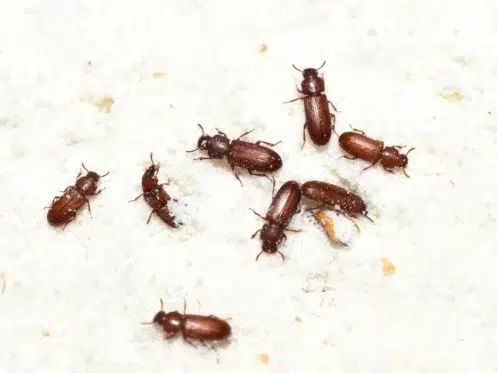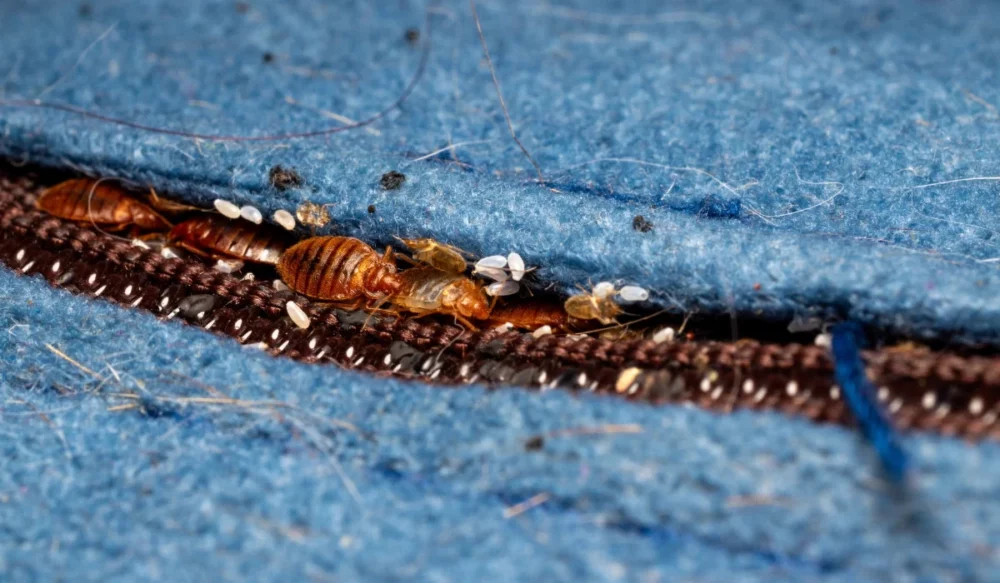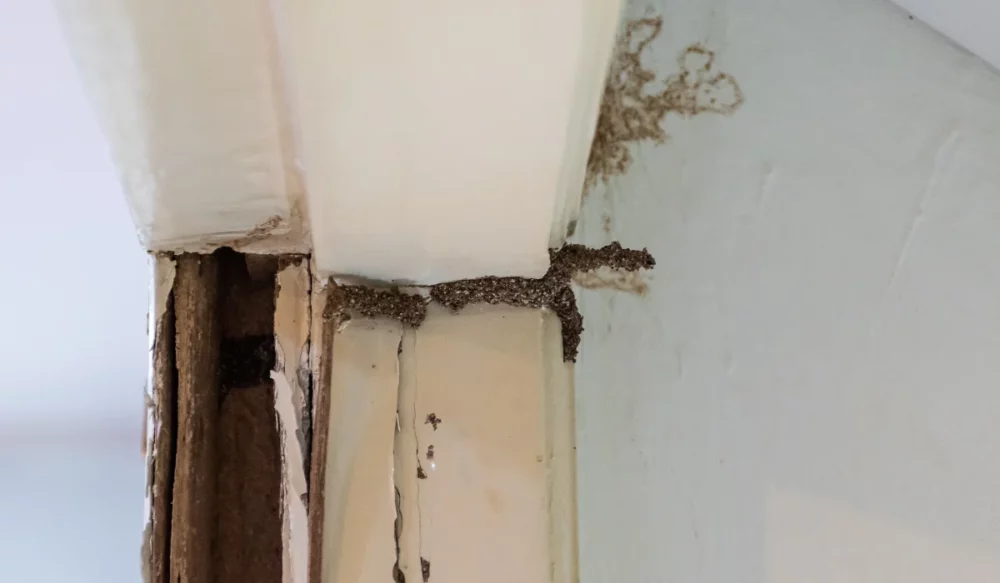When temperatures soar across Arizona, so does the activity inside your pantry, and not in a good way. You might not expect dried food like flour, powdered milk, or bird seed to attract insect pests, but pantry pests love them.
As homeowners in Phoenix, Tucson, and surrounding cities can tell you, it doesn’t take long for one infested food item to turn into a full-blown infestation.
This article will explain exactly why pantry pests love Arizona’s climate and offer a step-by-step guide to removing them and keeping your food storage safe.
Key Takeaways
- Arizona’s heat helps pantry pests grow faster, leading to bigger infestations in homes across Phoenix, Tucson, and beyond.
- Bulk food, loose packaging, and home crevices give pantry pests more ways to spread and stay hidden from sight.
- A strong pantry pest plan includes checking all food, tossing infested items, cleaning shelves, sealing, and freezing groceries.
- A recurring pest problem should be handled by local professionals who understand Arizona homes and pest control needs.
Why Arizona’s Heat Creates the Perfect Conditions for Pantry Pests
Arizona’s heat does more than keep your AC running. It also gives pantry pests exactly what they need to multiply. Here’s why they thrive in local kitchens, especially during the hottest parts of the year:
Warmth Speeds up Insect Development
Arizona’s heat helps pantry pests develop faster than they would in cooler climates.
Whether it’s red flour beetles or weevils, these pests thrive when temperatures hover above 85°F, which is a given from May through September in places like Peoria, Mesa, and Tempe.
Faster development means more adult beetles in a shorter amount of time, increasing the likelihood of infestation and making early intervention critical.
Bulk Buying Leads to Longer Food Storage
In cities like Gilbert and Chandler, it’s common to buy food products in bulk.
While that’s convenient for families and pet owners, it can be a goldmine for stored product pests. Items like pet food, powdered milk, and dried fruits often stay in storage for months.
When not stored in airtight containers, these become prime targets, especially in garage pantries or secondary storage areas that aren’t climate-controlled.
Grocery Store Packaging Can Be a Weak Link
Most common pantry pests don’t need much to get inside your home. A tiny hole in a box of cereal or a sealed bag of flour can be enough.
If food items sit in a hot car after a trip to the grocery store, heat can weaken packaging seams, allowing pests like confused flour beetles or sawtoothed grain beetles to escape and find other food sources in your pantry.
Pest Movement Increases in Extreme Heat
When the heat is relentless, like it often is in Glendale or Scottsdale, outdoor food sources dry up.
Insects, including cockroaches and even scorpions, move indoors looking for moisture and food. Stored food becomes a major draw for pantry pests during this seasonal migration.
As other food sources disappear, these pests zero in on the flour, grains, and even bird seed sitting on your shelves.
Arizona Homes Have Plenty of Crevices for Pests to Hide
Pantry pests don’t just stay in the food packaging. They often hide in crevices between pantry shelves, in baseboards, or behind food storage bins.
Many Arizona homes have open layouts and gaps near base cabinets, which makes it easy for insect pests to remain unnoticed.
By the time you spot a dark brown adult beetle or larvae on the shelf, the infestation has already spread beyond what you can see.
How to Get Rid of Pantry Pests in Arizona
Getting pantry pests out of your kitchen takes more than tossing a few boxes. Here’s how you can stop the infestation and protect your stored food for good:
Identify the Pests and the Infested Food
Start by inspecting all dried food in your pantry.
Look for signs of Indian meal moths (like webbing or tiny moths flying around), or beetles like red flour beetles and drugstore beetles. You might find larvae crawling inside packaging seams or across shelves.
Be especially cautious with stored food like flour, cereal, rice, and pet food. These are among the most common pantry pests’ favorite targets.
Discard Any Contaminated Food Products
Throw out anything with visible signs of pests. Don’t leave it sitting in the kitchen trash. Wrap it in a plastic bag and take it straight to the outdoor garbage bin.
If you toss infested food indoors, you risk giving weevils or beetles a chance to migrate to nearby food items and restart the infestation.
Deep Clean All Pantry Surfaces and Crevices
Remove everything from your pantry, yes, everything, and vacuum shelves thoroughly, especially corners and crevices. Scrub the surfaces with hot, soapy water and consider wiping them down with vinegar afterward.
This removes not just food residue but also the pheromones that attract other insect pests to the same location.
Repackage Food Into Airtight Containers
Whether you’re storing rice or dried fruits, airtight containers are non-negotiable in Arizona. Pantry pests can chew through thin plastic and cardboard, but they can’t get into thick plastic bins or glass jars with sealed lids.
For long-term protection, repackage all dried food and food products this way, even unopened items from the store.
Freeze New Groceries Before Storing
Freezing is an easy step to kill hidden eggs or larvae. Just pop newly bought flour, cereal, or dried food into the freezer for 3-4 days before placing it in the pantry.
This step is especially useful for residents in places like Mesa and Peoria, where bulk shopping from warehouse stores is common and pest risks are higher.
Call for Professional Pest Control if Pests Persist
If adult beetles or larvae continue to show up even after cleaning and discarding food, it’s time to call a pest control service. Trained technicians can help identify hidden infestation sites and provide treatments targeted for Arizona homes.
At Green Home Pest Control, we know the signs of stored product pests and how they overlap with other issues like cockroaches or even termite activity. Our pest control services are tailored to local conditions—from the extreme heat of Phoenix summers to the year-round pest pressure in Tucson.
Give us a call or request your free quote below.
Let’s get your home, and your food back to a safe, pest-free status.




